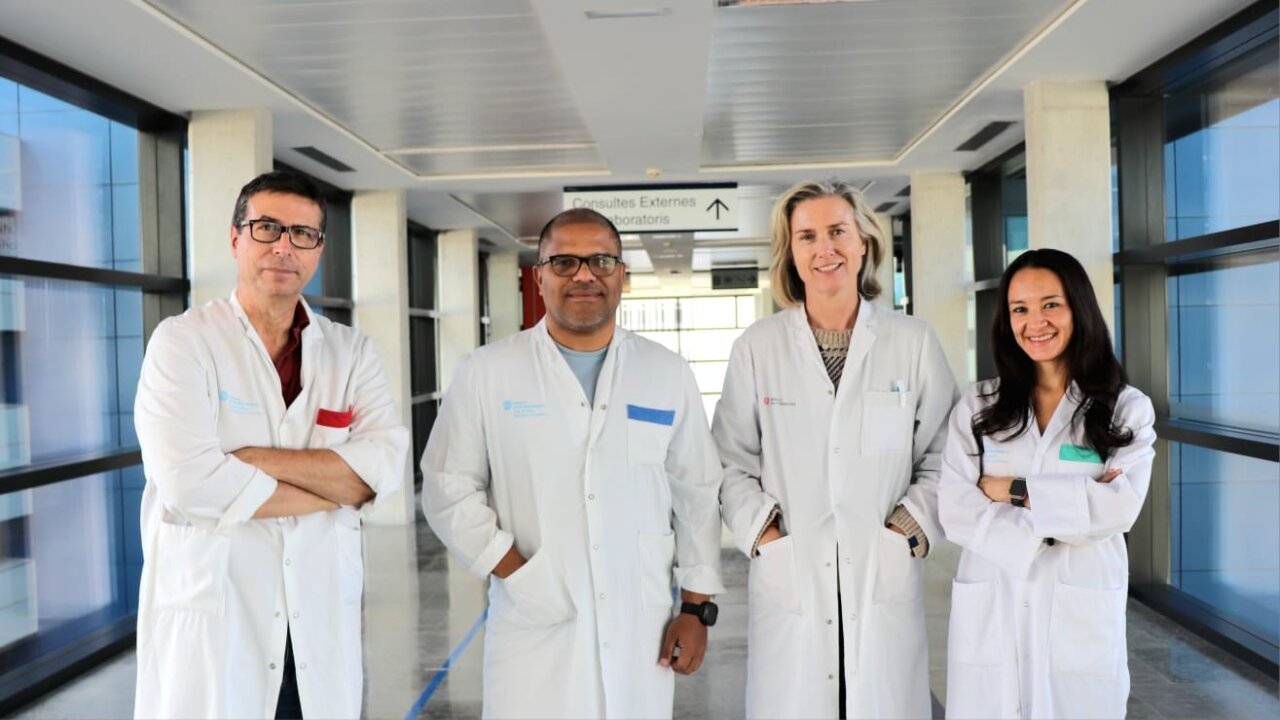“The results, especially in one patient in particular, have been very satisfactory”. Although he invites caution, hematologist Juan Carlos Herrera, of the Can Misses Hospital, is excited about the advances and the experience accumulated in patients on Ibiza with CAR-T cell therapy over the last two years. This is an advanced cell therapy that has begun to modify the prognosis of certain types of lymphomas and multiple myeloma in selected patients.
Both Herrera and his colleagues, Dr. Javier Vercher, Dr. Fabiola Aquilar, Dr. Sofia Villaverde and Dr. Lourdes Torres avoid any triumphalism, but stress that some of the answers “have been very satisfactory”.
Since 2023, four Ibizans have received this therapy through the reference hospital, Son Espases, a nationally accredited center. The balance combines caution and progress based on heterogeneous results: a young patient who maintains a complete response, an initial favorable evolution in another case, another case that has been followed up with complications in the peninsula and a death.
Hematologists insist: CAR-T is not yet for everyone, but it is beginning to open a window that did not exist before.
A promising development
In just two years, CAR-T in Ibiza has gone from being a distant concept to become a real therapeutic resource in very specific situations. It is applied only in patients with relapses or resistance to standard treatments. In the words of Dr.. Herrera, “it is a therapy that has come to provide one more possibility within the range of options”.
In terms of efficacy in patients with relapsed/refractory diffuse large B-cell lymphoma and multiple myeloma, CART cell therapy has demonstrated in clinical trials, high response rates and progression-free survival (PFS) superior to that observed with standard chemotherapy regimens, despite side effects.
Caution dominates the team’s discourse. Dr. Fabiola Aguilar stresses that “patients with a lot of disease or who have undergone several lines of previous treatment may have less than ideal results” and that the response depends, to a large extent, on the level of accumulated toxicity and the clinical moment at which the procedure is indicated.
The young patient who reinforces hope
The most striking case is that of a young woman withadvanced mediastinal non-Hodgkin B lymphoma that debuted with cardiac tamponade. After standard treatment, the disease progressed rapidly again. Referral to Son Espases allowed CAR-T to be applied.
Eight months later, the radiological controls speak for themselves. Dr. Herrera details that “he is in complete metabolic response at 30, 90 and 180 days” after the CAR-T cell therapy, with an evolution that he describes as “very satisfactory” . According to the physician, these results “have been spectacular”.
Dr. Aguilar, however, clarifies that “each patient has clinical characteristics such as age, functional status, comorbidities, previous lines of treatment, tumor burden, etc., which can influence the response of the disease to CAR-T cell therapy.
However, this example marks a turning point in the local perception of the treatment: for the first time, Ibiza has a young and highly aggressive case that achieves complete remission with CAR-T cell therapy.
Progress and limits
The other patients’ course shows a heterogeneous picture.
A second patient, with diffuse B lymphoma that relapsed before one year, has recently received CAR-T cell therapy and is “clinically stable” pending further studies.
The first patient treated from Ibiza had an adverse outcome. He arrived at CAR-T after “several relapses” and with a “very refractory” disease. He returned home after the procedure, but eventually died. Specialists recall that the accumulated resistance with multiple treatments hinders the efficacy of CAR-T.
The remaining case is that of a woman with aggressive multiple myeloma, referred to the Hospital Vall d’Hebron, Barcelona. She initially achieved a partial response and remained hospitalized due to complications associated with the treatment.
What exactly is CAR-T
CART cell therapy consists of extracting the patient’s T lymphocytes, modifying them genetically with an antigen that is specific to lymphoma or myeloma, so that the body will activate the immune system, generating a specific response that will attack the problem tumor cell.”
It is a procedure whose manufacture is complex and costly, its administration is limited to specialized institutions, financed in Spain by the Ministry of Health and applied only in accredited centers. In the Balearic Islands, the Son Espases University Hospital is listed as an accredited center, while Can Misses acts as a referral hospital, accompanying the patient before and after the procedure.
Who can access the CAR-T
Physicians stress that the indication depends on very strict clinical criteria, established by international trials and validated by the Ministry.
Dr Herrera specifies that:
- In diffuse large B-cell lymphoma , it is indicated when the patient “has not responded to a first line or relapses before 12 months”;
- In relapsed/refractory follicular lymphoma after two or more lines of systemic therapy.
- In multiple myeloma, “at least in second line of treatment” is indicated, provided that the program is active in the receiving center.
In any case, Dr. Aguilar also explains that what happens with highly polytreated patients is that they are at greater risk of not responding, because “the tumor cell develops resistance mechanisms the more it is exposed to previous treatments”.
These assessments are always coordinated with the expert center, which determines whether the patient can tolerate the procedure and whether the disease is sufficiently controlled to move forward.
Real risks, growing benefits
CAR-T cell therapy can cause cytokine release syndrome, hypotension, neurological disturbances and serious infections. Dr. Herrera sums it up literally: “It is not a harmless procedure by any means”.
Even so, the experience accumulated over time optimizes strategies in the management of complications, and specialists believe that CAR-T will continue to expand its indications as real-life studies confirm its benefits.
Herrera notes: “It has made a positive contribution… and to know that we have one more strategy with significant results within the therapeutic possibilities”.










